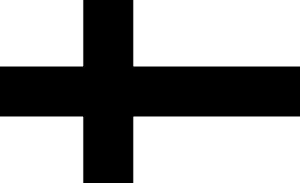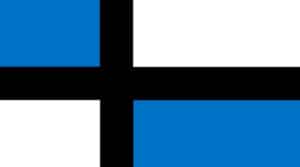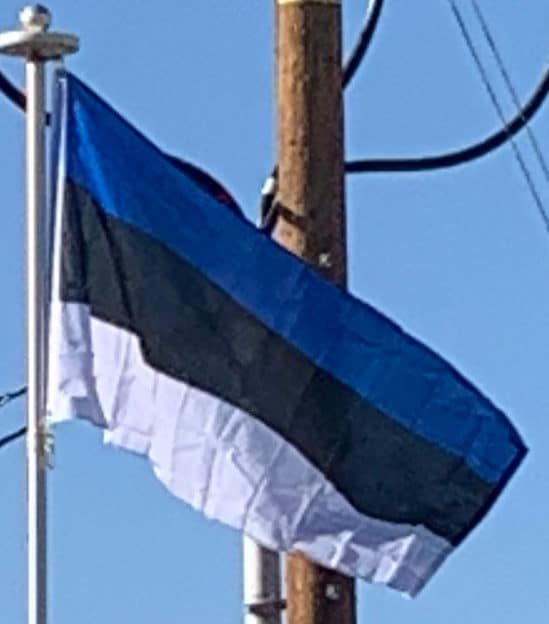The flag of Estonia fundamentally grew out of the flag of the German Order of the Cross, the black cross on a white field. This flag later resurfaced several other times, it was used as the flag of the United Baltic Duchy.

In the era of the crusades, the particular geographic domain of the contemporary Estonia’s location (the Eastern Baltic shores) was proclaimed to be “Land of Mary”, the Land of the Virgin Mary, “Terra Mariana” in Latin. (The region more to the South, the then-Prussia, was named the Land of St Peter). When creating its flag, the generic Teutonic banner was adapted so as to include the colors of the flag of St Mary. Mary being the “Virgin/Queen of Heaven”, her flag consists of blue representing the heaven/sky, and white, the color of purity.

The “Marian flag” itself, the flag of St Mary (St Maria), has two fields, white over blue. This original flag is still to be found in the flag of the Baltic Germans, and the flag of Pomerania (Province of Pomerania (1815–1945)). The Marian flag is still popular in Poland. It is also the flag of the Cathedral of St Mary in Luxembourg. This flag is also taken for the background in the San Marino (St Marinus) banner.
The merging of the Teutonic cross with the Marian colors resulted in the Terra mariana pattern. The pattern is today used in the coat of arms of the Jungingen family (Ulrich von Jungingen, notably, the Grand Master of the Teutonic Order active in the Baltic domain). It is also used in the coat of arms of the German town of Jungingen.

In 1860 the students of the Baltic-Prussian extraction studying in Germany (in Danzig, in Karlsruhe) established a society, the Baltica-Borussia (Prussia) student organisation (“corporation”). The coat of arms of that corporation was based on the known pattern of colours and their arrangement associated with the region and its German past (the coat of arms also incorporated the German eagle). The corporation also adopted a flag. As the idea behind the French revolutionary tricolours demanded that flags be composed of three fields of equal width (representing the equality of the citizens), so was the old Terra Mariana flag transformed into a tricolor (technically, a triband).
In 1881 the Society of Estonian Students at the University of Tartu (Estonia) was formed, a similar tricolor was constructed. Yet by that time the selection of the particular colors was also attributed to the Finnish flag, and the colors were ascribed symbolic meanings.
The flag became associated with Estonian nationalism and was used as the national flag (riigilipp) when the Estonian Declaration of Independence was issued on 24 February 1918. The flag was formally adopted on 21 November 1918. 12 December 1918 was the first time the flag was raised as the national symbol atop of the Pikk Hermann Tower in Tallinn.
